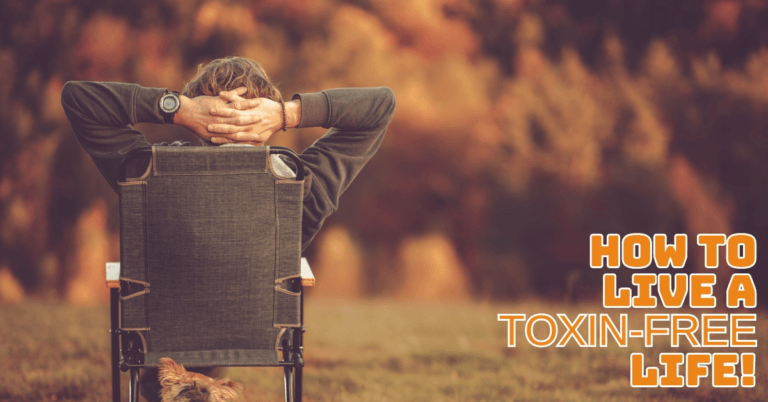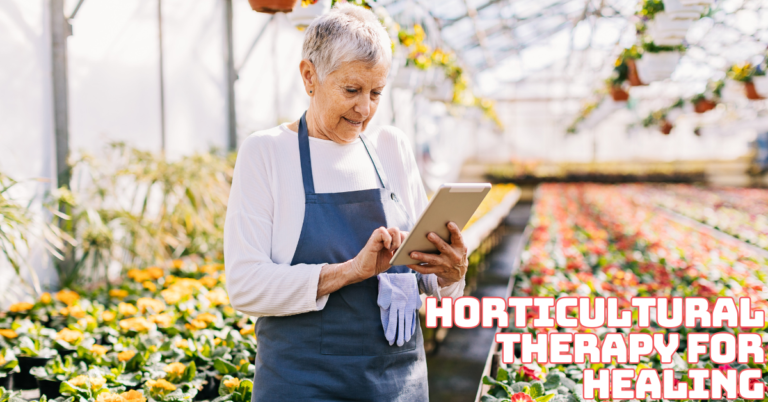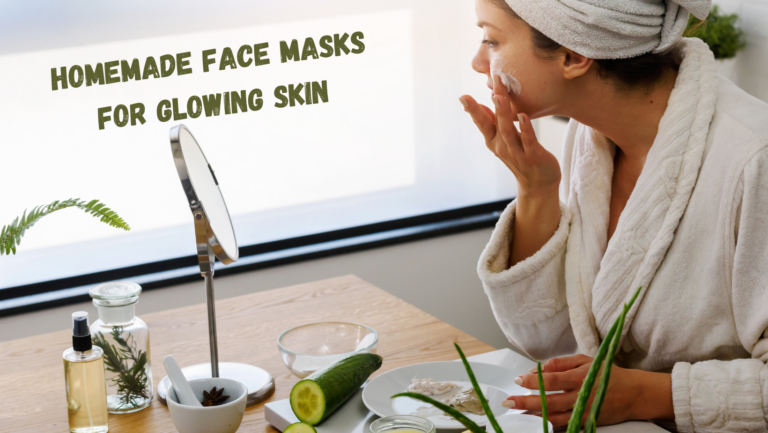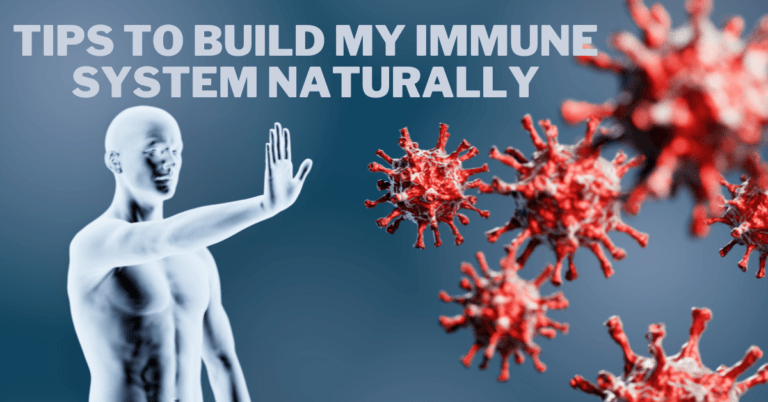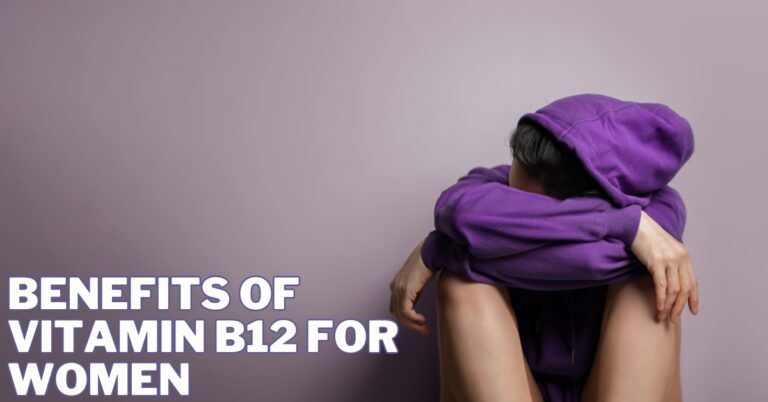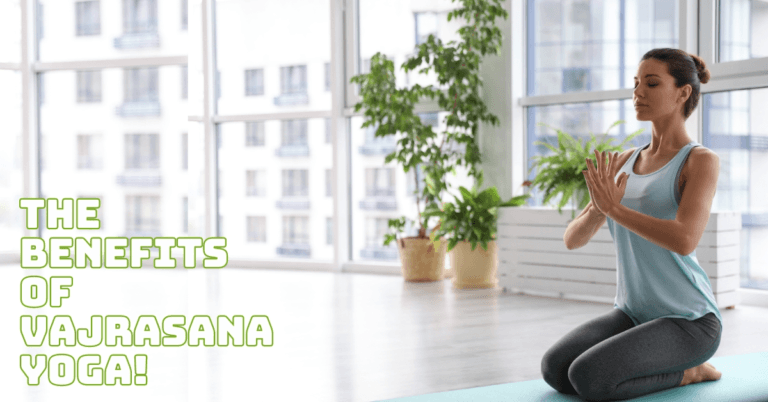Best Natural Therapies For Physical Well-Being
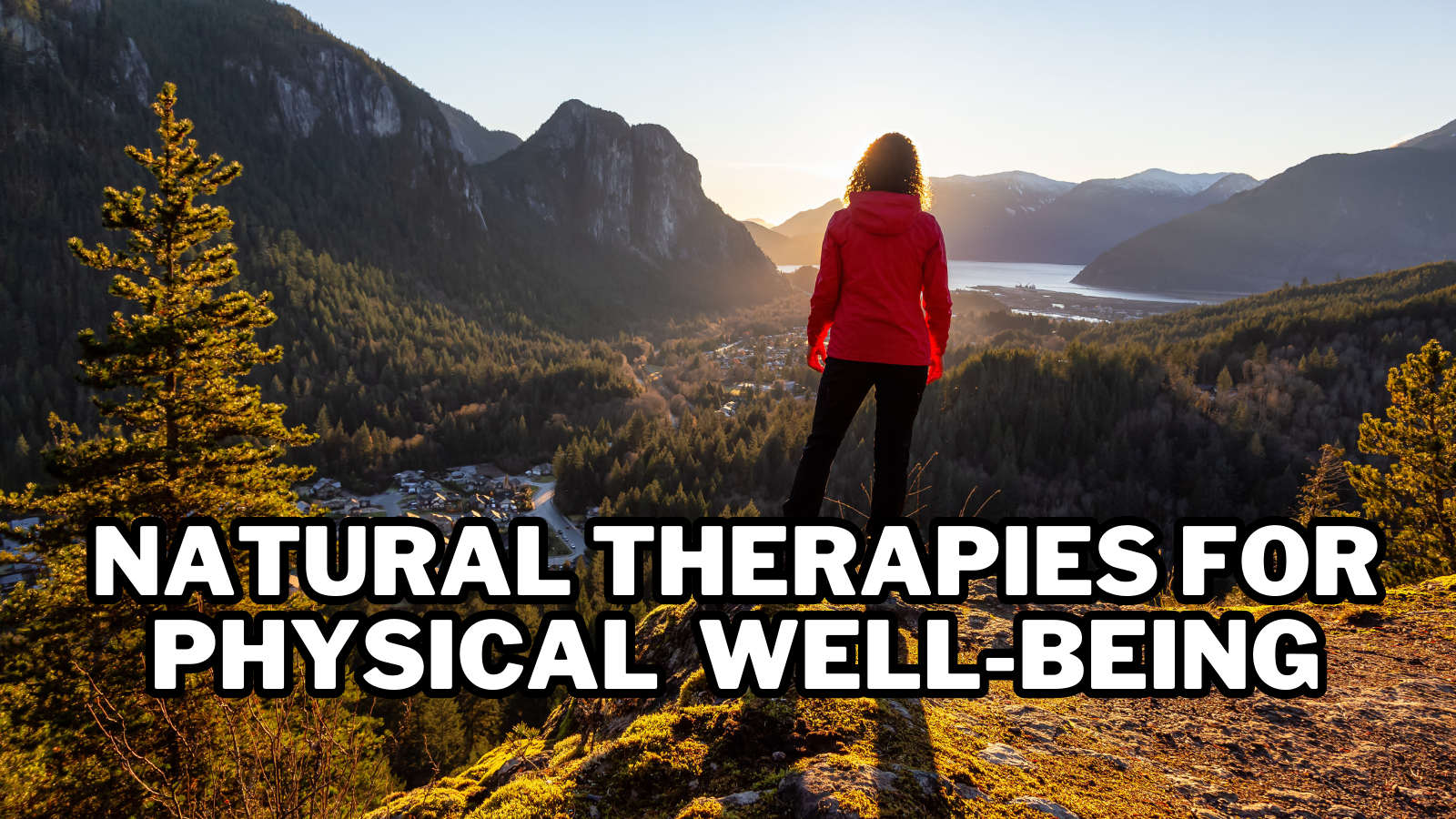
Best Natural Therapies For Physical Well-Being
In today's fast-paced world, it's easy to get caught up in the hustle and bustle of everyday life, leading to physical burnout. However, many natural therapies can help support your physical well-being.
From meditation and yoga to acupuncture and herbal remedies, these therapies have been used for centuries to promote health and well-being.
In this blog post, we'll explore some of the best natural therapies for physical well-being, so you can find the ones that work best for you.
Remember, natural therapies are not a substitute for medical treatment, so it's important to consult with your healthcare provider before trying any new therapy.
1. Herbal Remedies
Herbal remedies have a long history of use in traditional medicine and can effectively support physical well-being. Ginger is a popular herb for physical health that alleviates nausea and digestive discomfort.
Turmeric is another commonly used herb for its anti-inflammatory properties, which can help reduce pain and inflammation. Chamomile is a popular herb that promotes relaxation and reduces anxiety.
Lavender is another herb often used for its calming effects on the mind and body, which can help to reduce stress and improve sleep quality.
These herbs can be consumed as teas, added to foods, or taken as supplements. But before using herbal remedies, it's important to speak with a doctor, especially if you have any underlying health issues or are taking medication.
2. Massage Therapy
Massage therapy is a natural and non-invasive therapy that involves manipulating soft tissues of the body, including muscles, tendons, and ligaments.
Massage therapy can help to promote relaxation, reduce tension and pain, and improve circulation. One of the most popular massage styles is Swedish, which uses long strokes, kneading, and circular motions to stimulate and calm the body.
Deep tissue massage is another type of massage that involves applying pressure to deep layers of muscle tissue to help reduce tension and pain.
Hot stone massage involves using heated stones to apply pressure to the body, which can help to improve circulation and promote relaxation.
Massage therapy is safe for most people, but it is important to consult a licensed massage therapist to discuss health conditions or concerns before getting a massage.
Massage therapy is frequently used as a complementary therapy to conventional medical treatments and can be a terrific approach to increasing physical and mental well-being.
3. Acupuncture
Acupuncture is a centuries-old method of traditional Chinese medicine. It entails inserting tiny needles into predetermined body locations to activate the body's healing mechanisms. It is thought that acupuncture can regulate the body's energy and lessen tension, discomfort, and inflammation.
It benefits various health conditions, including headaches, back pain, and anxiety. During an acupuncture session, a licensed acupuncturist will carefully insert the needles into specific points on the body based on the patient's needs.
The hands are typically left in place temporarily, and patients may experience a slight tingling or dull ache during the treatment.
Acupuncture is considered safe, but working with a licensed and experienced practitioner is important. It is also important to note that acupuncture should be used as a complementary therapy to traditional medical treatments, not as a replacement.
4. Meditation
Meditation is a natural therapy practiced for thousands of years and is a popular way to promote mental and emotional well-being. It focuses on the present moment and can help to reduce stress, anxiety, and depression.
Mindfulness meditation is one of the most common types of meditation and involves paying attention to your thoughts, feelings, and bodily sensations without judgment.
Guided meditation is another type of meditation that involves listening to a recorded or live guide who leads you through a meditation practice.
Transcendental meditation is a specific type of meditation that involves silently repeating a mantra to help focus the mind and achieve a deep state of relaxation.
Meditation can be practiced anywhere, at any time, and requires no special equipment or training. Incorporating meditation into your daily routine can improve mental clarity, reduce stress, and promote overall well-being.
5. Yoga
Yoga is a natural therapy practiced for thousands of years and is a popular way to promote physical and mental well-being. It involves a series of physical postures, or asanas, designed to improve flexibility, strength, and balance.
In addition to physical practice, yoga includes breathing exercises, pranayama, meditation, or dhyana, which can help reduce stress and improve mental well-being.
There are many different styles of yoga, each with its unique focus and approach.
- Hatha yoga is a gentle and slow-paced style that is great for beginners.
- Vinyasa yoga is more dynamic and involves flowing movements synchronized with the breath.
- Ashtanga yoga is a more rigorous and structured style involving a set sequence of postures.
- Bikram yoga is practiced in a heated room and involves a sequence of 26 poses.
- Regular yoga can improve physical health, reduce stress and anxiety, and promote well-being.
6. Aromatherapy
Aromatherapy is a natural therapy using plant-derived essential oils to enhance physical well-being.
Essential oils can be used in various ways, including inhalation, massage, and diffusion. Different essential oils have other properties and can be used to address a range of health issues.
For example, lavender essential oil is a well-liked option for lowering anxiety and encouraging deep sleep due to its reputation for being tranquil and pleasant.
On the other hand, peppermint essential oil is used frequently to enhance mental clarity and attention because of its stimulating and invigorating qualities.
Other well-liked essential oils for aromatherapy include eucalyptus oil, which can help with respiratory problems like coughs and colds, and tea tree oil, which has antibacterial and antifungal properties.
You may enhance your physical and mental well-being and take advantage of the many advantages of essential oils by adding aromatherapy into your everyday routine.
7. Chiropractic Care
Chiropractic care is a natural therapy that focuses on improving the nervous system's function through spinal adjustments. These adjustments, also known as spinal manipulations, can help to correct misalignments in the spine, reduce pain, and improve overall health.
Medical conditions, including back pain, neck pain, headaches, and even digestive problems, can be treated with chiropractic care.
For example, a patient suffering from chronic back pain may benefit from chiropractic adjustments to realign the spine and alleviate pressure on the nerves causing the pain.
Chiropractic care can also be used as a preventative measure to maintain spinal health and prevent future health issues. By seeking regular chiropractic care, patients can improve their overall physical well-being and reduce the need for medication or invasive procedures.
8. Sound Therapy
Sound therapy is a natural therapy that uses sound to promote physical well-being. It can involve listening to music, singing bowls, tuning forks, or other instruments.
Sound therapy stimulates the brain and nervous system, promoting relaxation and reducing stress. The vibrations from the sound can also physically affect the body, helping to reduce pain and tension.
For example, a study published in the Journal of Alternative and Complementary Medicine found that participants who listened to Tibetan singing bowls experienced a significant reduction in tension, anger, fatigue, and confusion, as well as increased overall mood.
Sound therapy can be used with other natural therapies or as a standalone therapy for promoting relaxation and reducing stress.
9. Exercise
Exercise is a natural therapy that offers numerous physical well-being benefits. Regular physical activity can help to improve cardiovascular health, muscle strength, and flexibility. Exercise also results in the release of endorphins, which can elevate mood and lessen stress.
The type and intensity of exercise can vary depending on the individual's fitness level and health goals. For example, a beginner may start with low-impact exercises like walking, swimming, or yoga, while a more advanced exerciser may choose high-intensity interval training (HIIT) or weight lifting.
In addition to physical benefits, exercise can also improve mental well-being. It can help to reduce symptoms of depression and anxiety and improve overall cognitive function.
Regular exercise has also been linked to improved sleep quality, enhancing physical well-being. Incorporating exercise into a daily routine can lead to long-term improvements in health and well-being.
10. Nutrition
Nutrition plays a crucial role in supporting physical well-being. A diet rich in fruits, vegetables, whole grains, and lean protein can provide the necessary nutrients to support the body's functions.
In addition to supporting physical health, nutrition can also impact emotional well-being. Certain nutrients have been linked to improved mood and reduced symptoms of anxiety and depression.
For example, omega-3 fatty acids, found in fatty fish, nuts, and seeds, have been shown to improve mood and reduce symptoms of depression.
Magnesium, found in leafy greens, nuts, and whole grains, has been linked to reduced anxiety and improved sleep quality. B vitamins in whole grains, legumes, and leafy greens can also impact mood and cognitive function.
On the other hand, consuming a diet high in processed foods, sugar, and unhealthy fats can hurt both physical well-being.
You can support your physical health by making healthy food choices and incorporating nutrient-dense foods into your diet.
11. Mindfulness-Based Stress Reduction (MBSR)
Mindfulness-Based Stress Reduction (MBSR) is an eight-week program that combines mindfulness meditation, yoga, and other mind-body practices to help reduce stress and improve overall well-being. Developed by Jon Kabat-Zinn in the 1970s, MBSR effectively reduces symptoms of anxiety, depression, and chronic pain.
The program involves weekly group sessions, daily home practice, and gentle yoga exercises. Participants are encouraged to pay attention to their thoughts, feelings, and physical sensations in the present moment without judgment.
By developing awareness and acceptance of the present moment, MBSR can help individuals to manage stress better and improve their overall quality of life.
12. Art Therapy
Art therapy is a unique natural therapy that utilizes the power of artistic expression to improve physical well-being. Through painting, drawing, and other creative mediums, individuals can tap into their inner thoughts and emotions, reduce stress, and promote relaxation.
Art therapy can be helpful for a wide range of conditions, such as anxiety, depression, and chronic pain, as it allows individuals to express themselves in a non-verbal way and gain insight into their own emotions and behaviours. It also encourages creativity and self-discovery, promoting personal growth and empowerment.
13. Forest Bathing
“Forest bathing” began in Japan in the 1980s to reduce stress from contemporary life. It involves spending time in nature, particularly in forests, and considering the natural environment through all five senses.
Forest bathing can reduce cortisol levels, lower blood pressure, and improve immune system function. Studies have also shown that forest bathing can improve mood, reduce anxiety and depression, and increase overall well-being.
In addition to the physical benefits, forest bathing can also help to promote mindfulness and a deeper connection to nature. It can be done alone or with a guide and may involve walking breathing exercises, and meditation.
14. Mind-Body Techniques
Mind-body techniques, such as biofeedback and hypnotherapy, have become increasingly popular as people seek natural ways to manage stress and improve their overall well-being.
Biofeedback involves using electronic devices to measure bodily functions, such as heart rate, blood pressure, and muscle tension, and then learning how to control these functions through various techniques, such as deep breathing, visualization, and relaxation.
The goal is to help individuals gain greater awareness and control over their bodily responses to stress. On the other hand, hypnotherapy involves a guided relaxation technique that uses focused attention and imagery to achieve a state of deep relaxation.
It is used to help individuals overcome a range of issues, including anxiety, phobias, and addictions, by accessing the subconscious mind and creating positive changes in thought patterns and behaviours.
Mind-body techniques like biofeedback and hypnotherapy offer natural, non-invasive alternatives to traditional medical treatments and can help individuals improve their mental and physical health.
15. Traditional Chinese Medicine (TCM)
Traditional Chinese Medicine (TCM) is a holistic system of medicine practiced for over 2,500 years in China. TCM is based on the concept of Qi, or vital energy, which flows through the body along pathways called meridians. When Qi is flowing freely, the body is in balance and healthy.
TCM aims to restore the flow of Qi by using various natural therapies, such as acupuncture, which involves the insertion of thin needles into specific points on the body, and herbal medicine, which uses plants and minerals to support the body's natural healing processes.
TCM practitioners may also recommend dietary therapy, which involves using food as medicine to address specific health concerns.
For example, TCM practitioners may recommend warming foods, such as ginger and cinnamon, to promote circulation and improve digestion, or cooling foods, such as watermelon and cucumber, to reduce inflammation and soothe irritability. TCM can be used to treat a variety of health conditions, including chronic pain, digestive disorders, and respiratory conditions.
16. Reiki
Reiki is a form of alternative therapy that originated in Japan in the early 20th century. It is based on the idea that a life force energy flows through the body and can become blocked, leading to physical imbalances. Reiki practitioners use their hands to transfer energy to the patient, balance it, and promote healing.
The patient is usually lying down or seated, fully clothed, and may feel sensations of warmth, tingling, or relaxation during the session. While there is limited scientific evidence to support the effectiveness of Reiki, many people report feeling more relaxed and less stressed after receiving treatment.
17. Hydrotherapy
Hydrotherapy is a natural therapy that uses water to improve physical well-being. The therapeutic properties of water have been recognized for centuries and are still used today to treat various health conditions. Hydrotherapy can involve using water in different forms, such as hot or cold, moving or still, or water pressure.
For example, soaking in a hot tub can help reduce muscle tension and improve circulation, while a cold shower can help invigorate and stimulate the body. Using a sauna can also help to promote relaxation and reduce stress.
Hydrotherapy can benefit a range of conditions, including arthritis, fibromyalgia, and chronic pain. It can also be a valuable part of a general wellness routine to promote physical health.
18. Guided Imagery
Guided imagery is a mind-body technique that uses mental images to promote relaxation and reduce stress. It can be practiced alone or with the guidance of a therapist or recorded audio.
During a guided imagery session, the individual is encouraged to create vivid mental images that evoke peace, relaxation, and healing. These images may be related to a specific goal or intention, such as reducing anxiety or promoting physical healing.
The individual may be guided through a visualization of a peaceful scene, such as a beach or a forest, or they may be asked to imagine their body healing from an injury or illness. Guided imagery can be a complementary therapy for various conditions, including anxiety, depression, chronic pain, and insomnia.
Conclusion
Natural therapies can be powerful tools for promoting physical well-being. Various natural therapies are available to support and enhance overall health, from yoga to aromatherapy, mindfulness-based stress reduction to acupuncture.
These therapies can help to reduce stress, improve mood, alleviate pain, and promote relaxation. While they may not be a substitute for traditional medical care, they can be used in conjunction with it to support a holistic approach to wellness. To explore natural therapies, consult a qualified practitioner to ensure safe and effective use.
I trust you enjoyed this article on the Best Natural Therapies For Physical Well-Being. Please stay tuned for more blog posts to come shortly. Take care!
JeannetteZ
>>>Please click here to read my all-inclusive article about A Comprehensive Guide To Healing Naturally<<<
>>>Are you interested in Natural Healing through Herbs? Please click here for my #1 Recommendation<<<
Your Opinion Is Important To Me
Thoughts? Ideas? Questions? I would love to hear from you. Please leave your questions, experience, and remarks about the article the Best Natural Therapies For Physical Well-Being in the comments below. You can also reach me by email at Jeannette@Close-To-Nature.org.
Disclosure
This post may contain affiliate links. As an Amazon Associate and other affiliate programs, I earn from qualifying purchases at no extra cost to you. Please read my full affiliate disclosure.
You might also enjoy these blog posts:
Best Steps To Grow Turnips In Containers
Healthiest Root Vegetables For Gardening
Best Steps To Grow Chickpeas In Containers
Best Steps To Grow Crocuses In Containers
Best Steps To Grow Irises In Containers




















